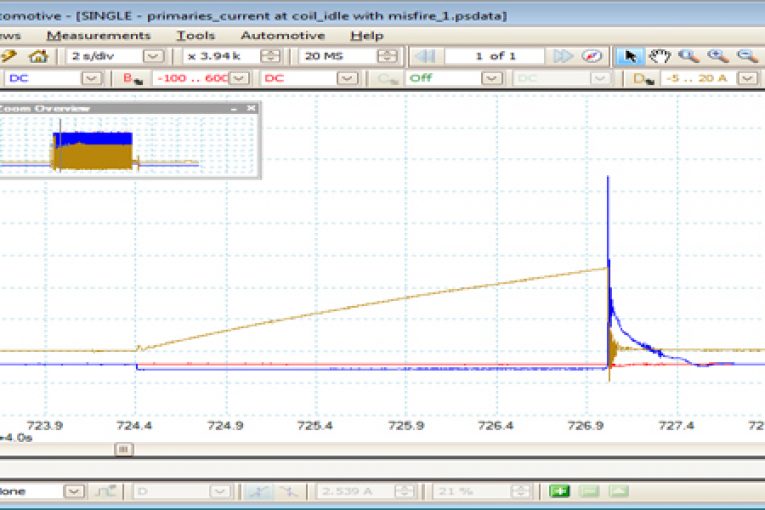
 VEHICLE: Peugeot 206 1.4
VEHICLE: Peugeot 206 1.4- ENGINE CODE: KFW YEAR: 2006
- SYMPTOMS: Misfire at cold start that clears quickly
This car arrived in the workshop with some clear symptoms:when cold starting, the vehicle would misfire, but when warm, it quickly cleared. No misfires occurred under normal driving conditions.
The first action was to plug-in with the serial scan tools (those used were Diagbox and SP ACR4/G2) to see what DTCs were present. Sadly in this case there were none stored, and a look at the live data didn’t reveal a great deal either; time to get the PicoScope out!
The first capture I took was the coil primary current on both sides with misfire present on either cylinder #1 or cylinder #4 (see Fig 1).
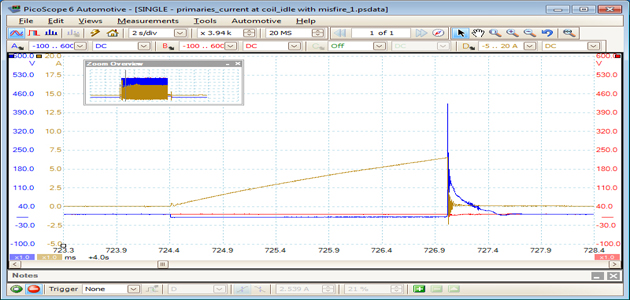
Fig 1: Coil primary current on both sides with misfire present
A clear misfire A misfire can clearly be seen, and the spark burn time seems to have taken place but dissipated too easily to ground. Is this the insulation in the coil pack? The spark plug? Or an in–cylinder condition? Which cylinder is it?
The next step was to hook up the CoilOn-Plug extension lead kit I recently purchased as secondary analysis was required to pinpoint the offending cylinder (see Fig 2). It can be seen that cylinder #4 is the misfiring cylinder, but we still needed to find out why this was.

Fig 2: Secondary misfire cylinder 4
Again the spark, which was mirrored in the primary capture from this secondary, is going to ground so it’s time to find out why!I zoomed in on cylinder #4 to take a closer look (see Figs 3a, 3b and 3c).
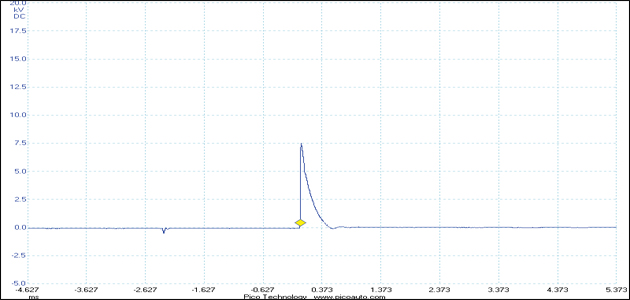
Fig 3a: Cylinder 4 zoomed. This reading, and traces below, show the misfire
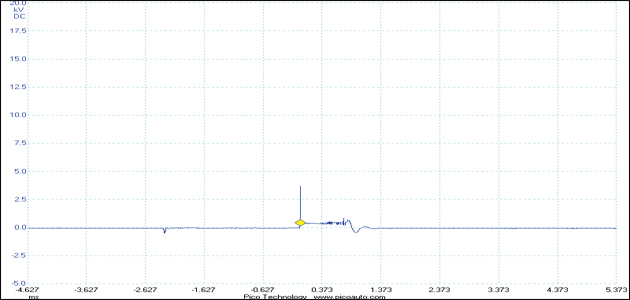
Fig 3b
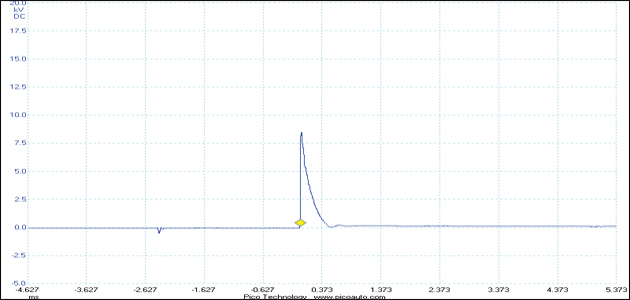
Fig 3c
I also noticed that as this was a DIS (Distributorless Ignition System) waste spark, that the spark on the waste stroke was intact – so was the coil performing under pressure? My next step was to undertake a coil output test (see Fig 4).
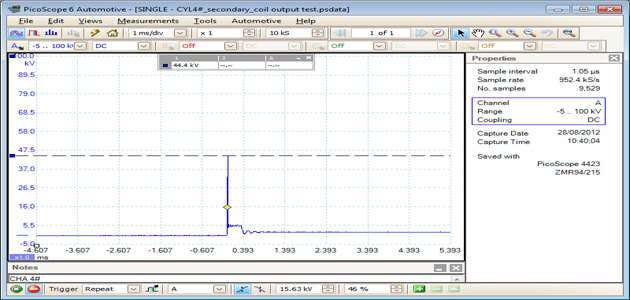
Fig 4: Coil output test
This test shows that the coil made around 45 kV, with some residual energy left after the burn time. Remembering that there is no misfiring under normal driving conditions, I was happy with this reading. The next question I had to answer was: ‘where do we go now?’
Testing the resistance
Looking at the downward sloping burn line with no residual energy left (coil ringing) a possibility is that there was high resistance in the secondary, a short to ground, or no fuel (Hydro Carbons) – which we all know to be a conductor – but I didn’t really see anything in the coil current ramp that jumped out as a short. I took out the cylinder #4 spark plug along with cylinder #1 and decided to test the resistance with my digital multimeter; after all I do this with plug leads so why not a spark plug?
The test results clearly showed that cylinder #4 spark plug had resistance to ground and cylinder #1 spark plug did not.
I had now narrowed it down to a spark plug issue on cylinder #4. Just to confirm my thoughts I swapped cylinder #1 spark plug and cylinder #4 spark plug over, then recaptured the secondary (see Fig 5).
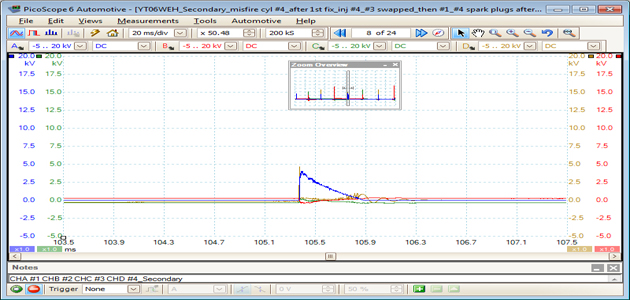
Fig 5: Secondary misfire with swapped plugs
The misfire followed the spark plug. An after-fix capture was then taken from cold start to confirm the fix (see Fig 6).

Fig 6: Scope trace showing no fault after fault corrected
Rob’s conclusion
A new spark plug cured this problem. I resisted the temptation to fit a full set as I serviced this car myself and the plugs had not been in that long, so I was more than happy to replace the defective one.
My thoughts about why the misfire cleared quickly were that when the plug heated up, the internal part of the plug that was shorting to ground was expanding and not making any further contact to the body of the plug until it cooled again – this same process was then repeating itself.
I think the hardest part of this task was getting the right conditions to catch the misfire, as waiting for a cold start was the biggest pain. Additionally, the owner’s job required them to work shift patterns so getting hold of the car was a bit like extracting blood from a stone!
As it was, this job came at just the right time as I wanted to try out the Coil-OnPlug extension leads that I recently purchased. These helped me no end as without them there is no way I could‘ve guessed the offending cylinder by just primary alone.
Once again without the PicoScope and accessories this job would have simply been guesswork and ‘swaptronics’!









